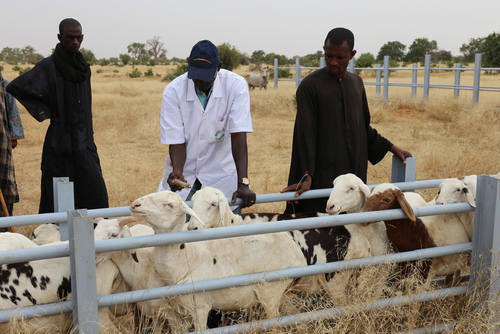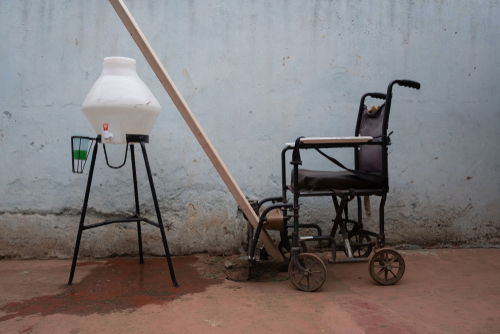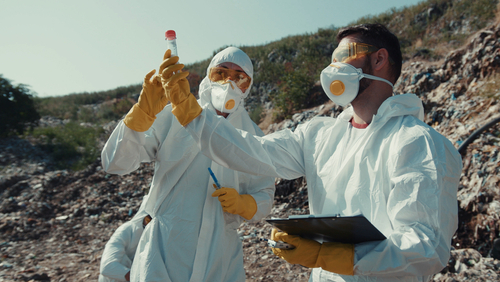December 04, 2023

Antimicrobial stewardship implementation barriers in low- and middle-income countries
Researchers who work in or come from low- and middle-income countries (LMICs) across Asia, Africa, and Europe shared their insights into challenges that threaten the implementation of antimicrobial stewardship (AMS) interventions. The roll-out of AMS in LMICs has been heterogeneous due to variations in the healthcare foundations needed to support AMS efforts. Gaps in health systems and infrastructure, weak supply chain networks, and a lack of healthcare professionals trained in infection control and prevention all pose significant barriers to enabling effective AMS in LMICs. Another key challenge is conflict, which not only weakens local and national health systems but also internally and externally displaces entire populations, thus making migrants and refugees particularly vulnerable to infections and AMR. Context-specific interventions that account for the social and economic considerations are urgently needed to address drug resistance in LMICs. [Infection Prevention in Practice]
Vaccination and seasonal surveillance can reduce the incidence of avian influenza in Bangladesh.
A new study examined the effects of a poultry vaccination campaign and climatic and socioeconomic factors on outbreaks of highly pathogenic avian influenza (HPAI) H5N1 in Bangladesh. The estimated incidence rate of outbreaks in the months before the national vaccination campaign initiated in 2012 was 18 times that in the months after the campaign. When accounting for meteorological variables, seasonality was shown to play a major role in the occurrence of H5N1 outbreaks, with significantly lower incidence rates between May and November – when ambient temperatures, relative humidity, cloud cover, and wind speed are highest. Factors such as adult literacy rate, chicken density, crop density, and the presence of national highways were also significantly associated with higher H5N1 outbreak rates across the various districts in the study period.[One Health]
Gaps in sampling protocols and ecological data on bats limit insights into their role as disease hosts.
A review of existing literature on African bat viruses identified gaps in knowledge about bats as reservoirs and/or hosts of zoonotic disease. Many studies were found to be biased in their focus and typically centered around bat species that pose an especially high risk for disease spillover, given their proximity to human communities. While ecological data on bats is essential to understanding their risk of disease transmission, this data was largely missing from the included studies, representing a large knowledge gap in current bat research. Furthermore, more than half of the studies used language that frames bats as threats to human well-being, potentially undermining bat conservation efforts and underplaying the role of human behavior in zoonotic disease transmission. [The Royal Society Biology Letters]
Barriers and opportunities related to genomic AMR surveillance at One Health interfaces
A working group of international experts in pathogen genomics, AMR, and One Health discussed the challenges and benefits of implementing genomic AMR surveillance at One Health interfaces. While the group agreed that genomic AMR surveillance holds enormous potential across One Health sectors, standardization of methods, quality assurance, and cost-benefit analyses must be enacted before its implementation. Experts provided a list of recommendations to overcome implementation barriers, including utilizing existing One Health surveillance activities [The Lancet Microbe]
Danger Signs are unable to predict bacterial sepsis in neonates in Malawi.
A new cohort study evaluated World Health Organization (WHO) developed Danger Signs (DS) predicting bacterial sepsis in infants under three months old with suspected sepsis in a regional hospital in Lilongwe, Malawi, between June 2018 and April 2020. Seven of the nine DS were significantly associated with mortality (OR 1.75 [95% CI: 1.43-2.17] per cumulative DS). However, only one DS, ‘unable to feed’, was significantly associated with bacterial sepsis. Notably, most infants received antibiotics as per hospital guidelines, despite just over 10 percent of infants testing positive on blood or CSF culture. Overall, DS are insufficient in identifying bacterial sepsis in neonates but can assist in predicting mortality in infants with suspected sepsis. [PLOS Global Public Health]
Social factors associated with malaria vaccine uptake in Kenya
After the newly prequalified RTS,S/AS01 malaria vaccine was piloted among 63 caregivers with vaccine-eligible children in Kenya, researchers performed a longitudinal sub-analysis of 11 of the studied caregivers to understand the social and contextual factors influencing vaccine uptake. Themes in the caregivers’ statements were categorized by the “5 A’s”: awareness, acceptance, access, affordability, and activation. Low awareness, individual and systemic barriers to access, and low acceptance caused by previous experiences of vaccine-associated side effects resulted in delays in the uptake of the first vaccine dose. However, over the two-year follow-up period, positive messaging about the vaccine from peers and at health facilities, healthcare provider screenings for vaccine eligibility, and increased perceptions of vaccine effectiveness motivated caregivers to vaccinate their children. [BMC Public Health]
Challenges of responding to a vaccine-derived poliovirus outbreak in conflict-ridden South Sudan
A new study described the epidemiological profile of a circulating vaccine-derived poliovirus type 2 (cVDPV2) responsible for a polio outbreak in South Sudan beginning in September 2020. Using national polio surveillance data, outbreak investigation reports, and vaccination coverage survey data, researchers found that between September 2020 and April 2021, there were 59 confirmed cases of cVDPV2 in people aged 1 to 84 months old. Nearly one-fourth of the cases had never received any doses of the oral polio vaccine (OPV) or the injectable polio vaccine (IPV). This low immunization coverage can be attributed to health infrastructure gaps caused by prolonged conflicts in South Sudan. Outbreak response activities included vaccination campaigns in highly affected counties, but these were interrupted and delayed by active tribal conflict, which led to further transmission of cVDPV2 and increased hesitancy to participate. [BMC Infectious Diseases]
Spatial modeling and risk mapping three soil-transmitted helminths in the Philippines
Researchers conducted a spatial modeling study to identify socioecological factors that drive the transmission of soil-transmitted helminth (STH) infections in the Philippines. The prevalence of any of the three STH species in the entire study – A. lumbricoides, T. trichiura, and hookworm – was 24.3 percent (95% CI: 27.9-29.0%), with a higher risk of infection in children aged 12 and above. For every one-unit increase in vegetation health and density and soil pH, the risk of A. lumbricoides infection decreased by 65 percent and 39 percent, respectively. A 1°C increase in ambient temperature was significantly associated with a 15 percent increase in the risk of infection by A. lumbricoides or T. trichiura. Risk mapping revealed a decline in the range of high-prevalence areas compared to a previous assessment in 2015, potentially due to school-based deworming campaigns and improved water, sanitation, and hygiene standards. [The Lancet Regional Health – Western Pacific]
Zoonotic disease control efforts must target gull-human interfaces in crowded cities.
Researchers analyzed fecal swabs and modeled the spatial trajectories of 129 yellow-legged gulls in Barcelona, Spain, to investigate the role of gulls as reservoirs of antimicrobial-resistant bacteria. Analysis revealed a higher prevalence of E. coli in immature gulls (18.3 percent) than in adult gulls (8.9 percent). Immature gulls traveled longer distances and covered larger areas than adults while infected, increasing the potential geographic spread of harbored bacteria. Recreational water sources, the food industry, and schools were the most commonly visited sites by gulls and represent sites of potential spillover of bacterial pathogens into human communities. [Science of the Total Environment]
Image from Shutterstock











